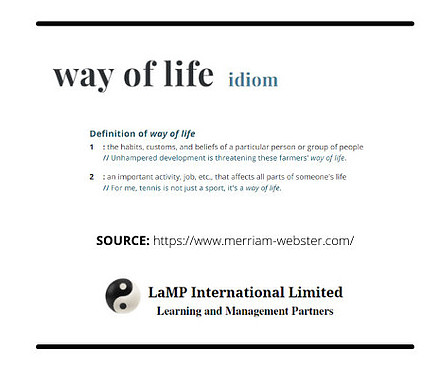If you are trying to understand what is managing performance and how it benefits both you and your organisation, this article may be of benefit. It shares 10 strategies to help you shine in the performance arena. Managing performance or performance management, which refers to the process itself, simply means making sure that what is done or achieved meets an organisation’s goals and objectives, efficiently and effectively.
(REFERENCE: Wikipedia)
Performance can be managed individually or collectively. That means as a group, team, department or the entire organisation. To be successful, performance management must include standards, organisation, communication, results, behaviours, roles, functions, responsibilities and rewards.
Too often performance is left to chance and managed ad hoc, leaving employees at a loss and disadvantage. Whilst there are hundreds of models available, you will always emerge successfully if managing performance becomes natural and a daily way of life for you.
1: Begin at Recruitment & Selection
Performance Management does not begin when an employee joins the organisation. It actually starts way before that and should be fully incorporated into your recruitment and selection process.
The reason that you are hiring is to improve performance, right?
So, to do that efficiently and effectively you should know what the organisation NEEDS to improve and why. Too often recruitment and selection are done to simply fill the space of someone who left or to meet targets.
This is an opportune time to up the ante and ensures that your new hire not only meets the current standards and objectives but can also grow in the role and improve the organisation’s future.
If you recruit for FUTURE performance, you have an opportunity to incorporate stretch goals to make sure that your employee does not become stagnant or bored.
Once that happens, they will soon be on the job market again.
2: Clearly Define Company Goals and Performance Objectives
Again, this begins during the recruitment and selection stage and can be well researched by facilitating assessment centres and doing thorough reference checks.
If done well, by the time the prospective employee arrives for the interview you would have your performance-based interview questions outlined and be ready to confirm alignment.
All your employees should know and internalise the company’s goals and performance objectives. Use meetings and discussion as opportunities to reinforce them.
Perhaps, you can allow employees to share how they work towards achieving goals and objectives and how close they are to meeting them and what they are learning along the way.
Here’s an excellent management tip:

MANAGEMENT TIP: Install an Active Performance Board
As your company goals are achieved and your performance objectives are met, highlight them and note the names of the employees who contributed. Nothing motivates more than public recognition for a job well done.
3: Use Every Opportunity to Communicate
When last did you reference your performance goals, standards and objectives when speaking with your manager, peers or staff?
Every interaction, engagement and exchange is an opportunity to communicate using your performance management objectives and outcomes. Performance management should be translated into a language that is embedded in your organisation.
The speak is introduced during recruitment and selection and reinforced at every opportunity after that.
If something is going well ask:
“How can we reinforce this behaviour or activity and make sure that it is remembered and demonstrated more frequently?”
If the outcome is not as positive or productive as you would like then ask:
“What are your suggestions for mitigating this risk or making sure that the outcome is not repeated?”
Use situations as learning and development opportunities.
4: Offer Feedback Regularly
This is one of my pet peeve areas when it comes to managing performance. Doing this one thing well could make such a big difference to our relationships, communication and productivity.
And, it costs nothing. That is what tickles me the wrong way. All it takes is some conscious effort to be genuinely interested in your employee’s progress and BINGO!
Far, far too often, giving feedback is a one-way conversation that happens once a year because it has to be done to tick a box. The tick is usually tied to salary increases or bonuses.
The Manager asks the employee to complete a form and put their thoughts on it. The employee nervously abides, walks into the office at the appointed time and listens to the Manager talk about the last couple of weeks performance while they pray that it was acceptable.
Providing feedback should be an ongoing and regular activity that opens the pathway for discussion and learning – both ways. Make this one change and see how engaged and motivated your employees become.
5: Build on the Strengths, Minimise the Weaknesses
During those performance feedback moments, remember to discuss both the good and not so good. (Refer to point #3.)
These will be the employee’s strengths and weaknesses. If your performance management is progressing well, the strengths will become well, stronger and the weaknesses will be learned from and minimised.
Over time, you will be having fewer conversations around what is not going well and celebrating the successes that come from a job well done and an experience shared.
Yes, remember to share those strengths with others.

Ask your employee to connect with another employee who may be struggling in that area and share what he or she did to succeed. These connections will create bonds and a domino effect within your department and, eventually, your organisation.
You are not expected to know everything. You are expected, as a manager, to get things done through people.
6: Remember Your High Performers
I was always a high performer. During my 7 years at secondary (high) school, I came 7th once and 3rd twice. During those terms, I just laid back and relaxed because coming 1st became boring.
When I entered the workplace, I sped off again, completing my professional certification exams in 2 years when it usually took other employees 3 to 5 years. I won many awards for that and for achieving the most distinctions in the company’s history.
The reward was being promoted early. I became the Supervisor of our Computer Department at 21 years and continued to progress, requiring very little supervision or training.
Was I happy and satisfied? No!
Why?
I felt taken for granted. As a high performer, it seemed that most of what I received was more work, especially the work that others did not want to do or could not understand how to do. Soon I was working longer hours, every day and hardly experienced any training or development opportunities.
Most high performers I have encountered over the years feel that way. High performers have needs too and you will gain a few happier employees if you paid them some meaningful attention, BEFORE they move on to another job role!
7: Include Personal Goals and Objectives
As I shared previously, I was always a high performer so I never wanted or asked for anything much from my managers or my organisation. As more of my time was being spent at work, I realised that I was having less and less time for myself.
One day, after working around the clock for a few weeks on new software implementation, one of my Directors asked me what I wanted. I responded simply: “Time off, paid or unpaid.”
He looked at me confusingly and replied firmly: “That’s all?!”
“Yes”, I said. “That’s all.”
He gave me one week of paid leave and it was one of the best weeks I ever had.
When I returned to work, I worked even harder. My Director made it clear that whenever I wanted time off, It was mine to be had. During those periods of time off, I travelled, learned to dive and mastered my photography.
Knowing that some of my personal objectives were being met with the support of my Manager and my organisation increased my personal satisfaction.
Still, today, it is my favourite way of recognizing and rewarding my employees. I send them a little note inviting them to enjoy some time off, at the company’s expense.
It never ceases to create joy and raise productivity.
8: Provide Rainbows and Horizons
I refer to goals and objectives as providing rainbows and horizons. It simply means that it is important for you to create a vision of the destination for your employees. They need to know what things would look and feel like when they achieve the performance that you expect.

Without rainbows and anchors as anchors, your employees will drift aimlessly and not know when they have attained the level of performance that you expect.
Whenever my daughter is preparing for a major event usually an academic or dance exam, we make a little vision board. It shows what the outcome looks like (improvement in the subject or activity) and what she can enjoy if she achieves her performance goals.
Adults are no different. We like to know, especially if there are some rewards at the end of the rainbow.
9: Reach Out for Recommendations, Implement What You Can
As managers, we do not ask enough. This means that we are also not listening or observing as much as we should. Most managers approach the work environment as though they should know everything.
Managing like that creates an unhealthy distance that makes your employees feel left out and distant from you and the organisation.
When you are really in a bind and need to rely on unity and cohesiveness, you will be left wanting.
Ask your employees for their opinions on matters that involve them and that you can share. If you are changing the chairs, let them do the research.
Planning a lunch meeting? Ask them to decide the menu and let them organise it. Remember to give credit and recognise their efforts.
Safety issues in the workplace? Ask for their opinions about why they are happening. The responses may just surprise you.
10: Celebrate!
This may sound like a no-brainer but please celebrate your performance achievements with your employees. Wait! I am not saying to have a big bash everything something happens.
What I am referring to is using your small performance achievements to help your employees shine and smile.
Everyone likes to know how they are doing and, if they are doing well a little celebration could go a long way.
The financial target may be on the horizon for December but what stops you from bringing in doughnuts in March or July if your target averages have been met?
Happy employees are more productive and if you follow the law of attraction, creating an environment of reward and recognition will feed a culture that nurtures, supports and attracts more of the same.
Why is Performance Management Important?
All too often, so many people get performance management wrong.
They focus on the system, the form and the wrong reasons for doing it all while forgetting the fundamental element in all of it – the PERSON. Perhaps because management is about controlling that is the reason why they stick on the ineffective things.
Most employees do not like the performance management process or benefit much, if at all, from it. Shouldn’t that be a good enough reason to approach it differently?
Once you understand that it is NOT a one-off event but an ongoing and active way of engaging with employees and helping them to grow and develop you will soon notice the positive impact it will have on you, your employees and your organisation.
In time, as you practice these new behaviours, you and your organisation will not just shine you will beam brightly and pass your light on to others.

Cassandra is the Founder, Managing Director and Lead Partner at LaMP International Limited.
She is an internationally trained, experienced and versatile Executive, Facilitator, Speaker, Coach and Publisher. Her expertise in Organisational Behaviour, Change Management. Group Work, Communications, Talent Development and Strategic Human Resources Management allow her to bring a unique and engaging style to the table.
When not in the dynamic business arena you can find her travelling the world with her daughter, writing, hiking, enjoying extreme sports, capturing life and nature or getting her hands dirty in the soil.


